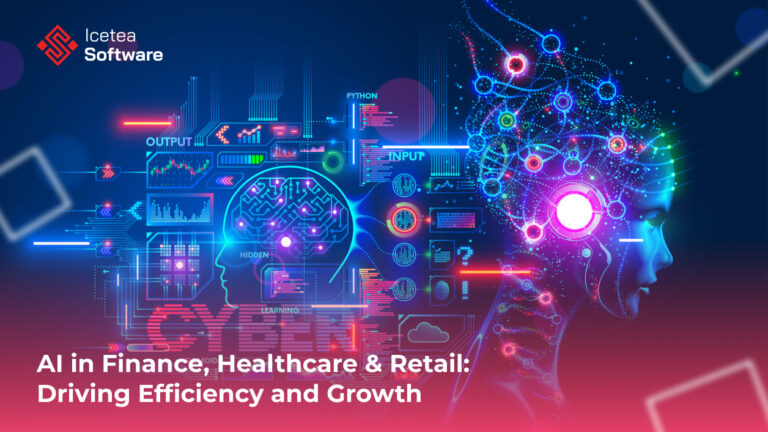Digital Health in APAC 2025: A New Era of Connected Care
In 2025, digital health is no longer an emerging trend in the Asia-Pacific (APAC) region—it’s a fundamental pillar of modern healthcare. Spanning highly developed economies like Japan, South Korea, and Singapore, to rapidly growing markets such as Vietnam, India, and the Philippines, APAC represents one of the most dynamic, diverse, and fast-evolving digital health landscapes in the world.
The post-pandemic era has accelerated the adoption of technology across the healthcare value chain, from telemedicine and AI diagnostics to smart hospitals, wearable health devices, and blockchain-based records. Governments are embracing digital transformation, startups are innovating at breakneck speed, and patients are becoming more health-aware and tech-savvy. In this blog post, we delve into
What is Digital Health and How Has It Evolved?
The digital health market in APAC is growing at a fast pace, driven by innovations like telemedicine, wearable health devices, and AI-driven diagnostics. In the past, digital tools played a supporting role, often limited to basic recordkeeping or isolated health apps. Today, digital health is deeply integrated into clinical workflows and patient experiences, enabling real-time care, personalized treatment, and data-driven decision-making. These factors accelerate advancements and position Asia-Pacific as a leader in reshaping digital healthcare, but transformation relies on leveraging medical data, unlocking the potential of AI, and using digital equipment effectively. It also calls for the development of ethical policies and support for innovation.
A Diverse Yet United Ecosystem
APAC’s diversity is one of its biggest strengths—and one of its most complex challenges. With countries at various stages of development, infrastructure maturity, and regulatory sophistication, a one-size-fits-all approach doesn’t work. Yet, the region has found strength in this diversity, adopting a blend of localized innovations and region-wide collaborations.
- Singapore, with its Smart Nation initiative, leads in integrating digital health into national policy.
- Australia is expected to witness the fastest growth rates, supported by robust governmental digitization efforts and a growing emphasis on healthcare innovation through the My Health Record system.
- India is scaling up its Ayushman Bharat Digital Mission to provide a universal health ID and interoperable health records for its 1.4 billion citizens.
- Indonesia and Vietnam are rapidly expanding mobile-first healthcare solutions for rural and underserved populations.
- China remains a global leader in AI-driven health diagnostics and telemedicine thanks to its rapid internet and smartphone penetration.
Despite differences in infrastructure and policy, a shared commitment to tech-driven healthcare transformation is binding the region together.
Regulatory Development and Government Assistance
In a region as diverse as APAC, regulatory harmonization and interoperability across is crucial. Harmonizing regulations across countries can significantly streamline the cross-border implementation of digital health technologies, accelerating the spread of innovative solutions. This alignment not only boosts the sector’s economic potential by attracting global investment and lowering regulatory barriers but also reinforces data security standards across the region. Additionally, a cohesive regulatory environment enables better sharing of health data and insights, empowering APAC nations to collaborate more effectively in addressing public health issues and enhancing healthcare outcomes.
Advancing Digital Health Maturity in APAC
Progressing toward digital health maturity in the Asia-Pacific region requires a unified effort involving governments, private enterprises, and international stakeholders. Several key actions can support this transformation:
- Expanding digital infrastructure: Providing reliable internet connectivity and access to digital tools is essential to enable the adoption of health technologies at scale.
- Aligning regulatory frameworks: Creating unified standards and regulatory systems across countries helps facilitate the seamless exchange and implementation of digital health solutions across borders.
- Ensuring data protection and security: Implementing strong privacy regulations and enforcing compliance are vital to gaining user trust and safeguarding sensitive health information.
New Trends to Expect
As digital health continues to evolve, new trends are emerging that will redefine the way care is delivered, managed, and experienced across the globe. In 2025 and beyond, we can expect to see a deeper integration of advanced technologies, more inclusive healthcare ecosystems, and a growing emphasis on personalization, efficiency, and collaboration. Below are some of the most transformative developments that are set to drive the next wave of progress in the digital health landscape.
Ambient AI and Voice-Enabled Support
Moving beyond basic voice recognition, ambient artificial intelligence will take center stage in automating clinical documentation. This hands-free technology allows healthcare professionals to concentrate on patient care while the AI discreetly records and structures medical data in real time—reducing paperwork and minimizing the risk of human error.
Insurance-Driven Healthcare and Unified Digital Platforms
Around the world, healthcare systems are increasingly shifting from out-of-pocket models toward insurance-based and value-driven care. This global trend is supported by rising public and private investment in healthcare infrastructure, along with a growing emphasis on financial protection and universal health coverage. In this evolving landscape, integrated digital platforms are becoming essential bringing together electronic health records, insurance claims, and reimbursement processes into a seamless, interoperable ecosystem that enhances transparency, efficiency, and accessibility for patients and providers alike.
AI-Driven Personalized and Preventive Healthcare
With the help of artificial intelligence and sophisticated data analytics, healthcare delivery will become increasingly personalized. This includes tailored screening programs for early disease detection and treatment plans customized to an individual’s genetic profile and clinical history, enabling more precise and proactive care.
Strengthening AI Through Public-Private Collaboration
The future of digital health globally will be shaped by stronger collaboration between governments, healthcare institutions, and private-sector innovators. Across regions, strategic partnerships are emerging to create standardized frameworks for AI research, validation, and deployment. These collaborative ecosystems are essential for scaling innovation, ensuring data security, and accelerating the adoption of transformative technologies that enhance efficiency, accessibility, and outcomes across health systems worldwide.
The Road to 2030: Smart, Inclusive, and Preventive Healthcare
Looking ahead, the next phase of digital health in APAC will focus on three pillars:
- Smart Health: AI, IoT, and blockchain will power a new generation of personalized, real-time, and data-driven care experiences.
- Inclusive Health: Digital health tools must reach all populations, including the rural poor, elderly, and underserved.
- Preventive Health: With wearable tech and predictive analytics, health systems can shift from reactive to preventive care—reducing costs and improving lives.
Emerging technologies such as digital therapeutics (DTx), genomics, virtual reality in therapy, and digital twins for clinical simulation are already being tested and piloted across APAC.
Final Thoughts
As 2025 unfolds, the Asia-Pacific region is proving that digital health is more than just a trend—it’s a long-term transformation that is reshaping how healthcare is delivered, accessed, and experienced. From AI-powered diagnostics to telehealth expansion and interoperable platforms, the region is pioneering models that the rest of the world is watching closely.
At the heart of this movement is a growing ecosystem of enablers—and Icetea Software is proud to be among them. With deep expertise in blockchain infrastructure, data interoperability, and scalable digital solutions, Icetea Software is committed to helping healthcare providers, governments, and startups alike bring bold ideas to life.
By delivering tailored technology that supports secure patient data exchange, seamless health record integration, and smart application development, our company is actively contributing to the foundation of a smarter, more connected, and patient-centered healthcare system in APAC.
As we look ahead, the future of healthcare will not be shaped by any one player alone—but by collaborative ecosystems that prioritize innovation, inclusion, and impact. Icetea Software remains dedicated to being a trusted technology partner on that journey—empowering the digital health breakthroughs that improve lives across the region and beyond.
————————————
𝐈𝐜𝐞𝐭𝐞𝐚 𝐒𝐨𝐟𝐭𝐰𝐚𝐫𝐞 – 𝐂𝐮𝐭𝐭𝐢𝐧𝐠 𝐄𝐝𝐠𝐞 𝐓𝐞𝐜𝐡𝐧𝐨𝐥𝐨𝐠𝐢𝐞𝐬
𝐖𝐞𝐛𝐬𝐢𝐭𝐞: iceteasoftware.com
𝐋𝐢𝐧𝐤𝐞𝐝𝐢𝐧: https://www.linkedin.com/company/iceteasoftware/
𝐅𝐚𝐜𝐞𝐛𝐨𝐨𝐤: https://www.facebook.com/IceteaSoftware/
𝐓𝐰𝐢𝐭𝐭𝐞𝐫: https://x.com/Icetea_software








